Wrangell St Elias National Park
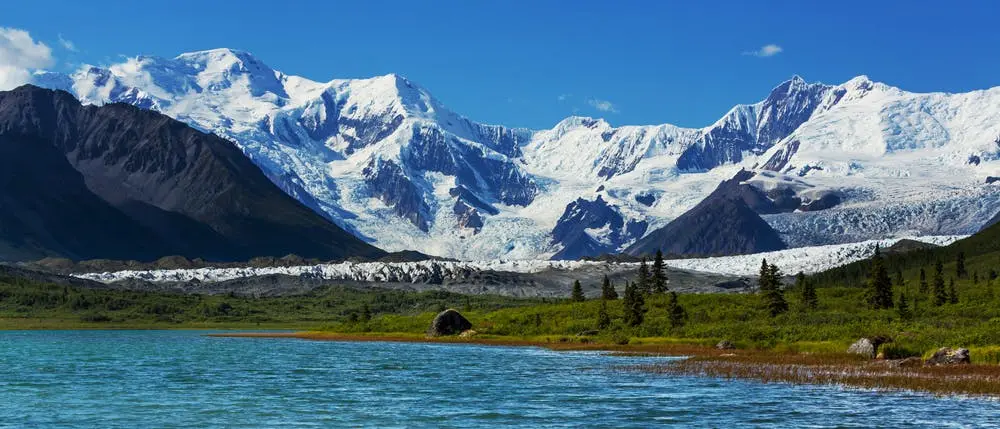
WIDE-RANGING INVENTORY
From affordable pop-ups to luxury motorhomesLARGEST RV RENTAL MARKETPLACE
Thousands of 5 star reviews from happy customersSECURE AND MOST TRUSTED
24/7 Emergency roadside assistance on every booking- Home
- National Parks
- Wrangell St Elias National Park
Located in Alaska, Wrangell-St. Elias National Park is America’s largest national park! It has elevations all the way from the ocean up to 18,008 feet, and is 13.2 million acres – the same size as Yellowstone National Park, Yosemite National Park, and Switzerland combined.
Visiting Wrangell-St. Alias National Park is a bit different than visiting other parks. It’s a true wilderness experience, as the park is filled with several living cultures, historic sites, mountains, glaciers, volcanoes, and wildlife. Visitor services at the park can be limited, access throughout the park can sometimes be challenging and the weather varies. But, the visit is worth the reward! The National Park is rugged, beautiful and filled with opportunity for true adventure.
Weather in Wrangell-St. Elias can change quickly in any season, so when it comes time to pack, it’s all about layering! With the exception of the Yakutat part of the park, which is located along the coast, Wrangell-St. Elias National Park has long, extremely cold winters, and short, warm, relatively dry summers.
In general, it can snow any month of the year in the high country of the park. June and July are the warmest months, with highs reaching near 80 on some days. In general, rainfall increases in August and September, especially along the coast.
Autumn arrives early at the Wrangell-St. Elias National Park and the beautiful colors of fall start to appear by mid-August. The fall is short, however, as the first snows often begin in September. Winter at the park is long, dark and extremely cold. The highs are typically between 5-7 degrees F and lows dip all the way down to -50 degrees F. In the springtime, average highs are between 40-50 degrees F and the days begin to get longer.
In the coastal Yakutat area, weather can vary from other parts of the park. Storms with high winds typically occur during the spring, fall and winter, with the area receiving about 151 inches of rain a year. To avoid the rain, visit in June when the average precipitation is around 7 inches of rain. During the winter, the average low is around 26 degrees F, although you can expect plenty of snow, as Yakutat receives an average of over 200 inches of snow each winter.
The primary time to visit the park is between early June through mid-September. Because winter arrives early to this part of Alaska, by mid-September, many services and facilities have shut down for the season. There are two main roads into the park, Nabesna Road and McCarthy Road, both open year-round, but they are not maintained regularly during the winter.
Because the park is so large, there are plenty of things to see and do throughout the park itself and within some of the towns and communities located nearby. If you’re looking for in-park activities, view a full calendarhere.
Some of the activities you can do in Wrangell-St. Elias National Park include backpacking, hiking, mountain biking, boating, fishing, wildlife viewing, winter activities and much more. For a full list and more information about the park activities, clickhere.
- Coming soon
- Coming soon
RV Rentals Near Wrangell St Elias National Park
Nearby RV Rentals
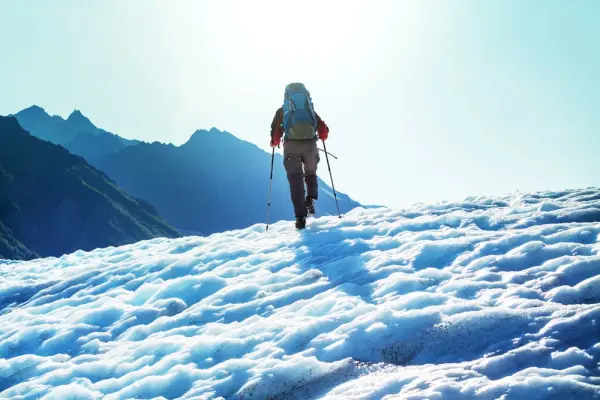
Wrangell St Elias National Park Hiking Trails
With over 13 million acres in the Wrangell-St. Elias National Park, there are plenty of opportunities for hiking, whether it’s along the coast, backpacking over mountains and glaciers or day hikes through the forest. For a full list of backpacking trails and more information on backpacking within the park, clickhere, and for more information on day hiking, clickhere.
Here are some of our favorite hiking trails worth checking out.
Copper Center Area Trails
McCarthy Road and Kennecott Trails
Nabesna Road Trails
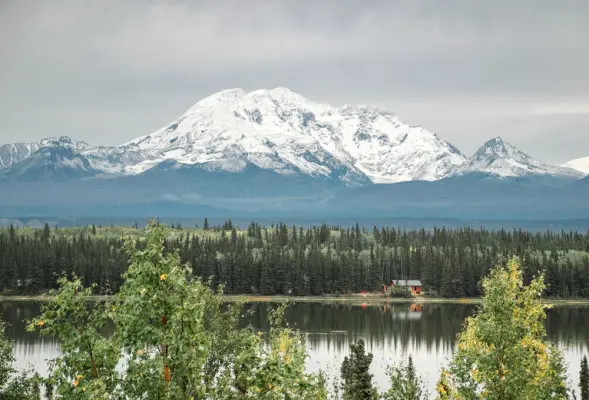
Things to do Outside Wrangell St Elias National Park
When you’ve exhausted all the trails, experienced wildlife up close and are ready to relax, there are plenty of options nearby the park! Whether it’s enjoying a delicious meal cooked with local ingredients, doing some shopping or hitting the local museums, there is something for everyone nearby Wrangell-St. Elias National Park.
Restaurants
Shopping
Sightseeing
Discover Nearby Towns and Cities
RV Resorts & Campsites near Wrangell St Elias National Park
There are a wide variety of camping experiences and locations within and nearby the Wrangell-St. Elias National Park. Here are some of our favorites.
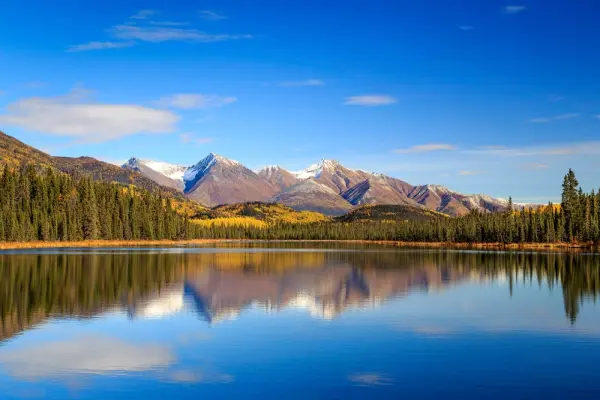
Campgrounds Near Wrangell St Elias National Park
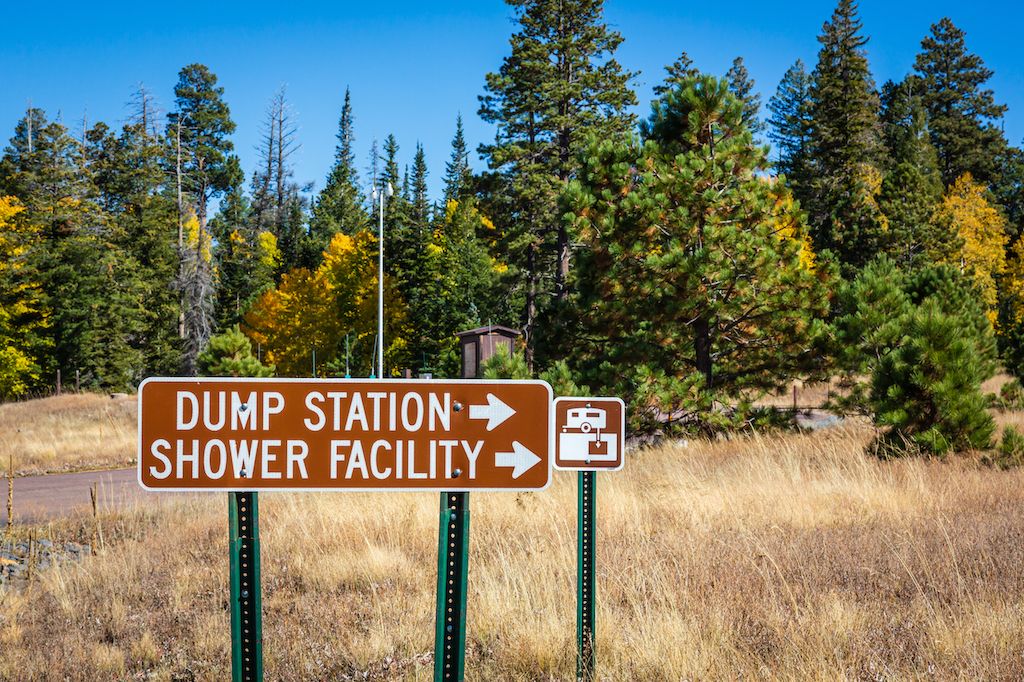
Find the Best Dumpstations Near Wrangell St Elias National Park
Dumpstations Near Wrangell St Elias National Park

How to get to Wrangell St Elias National Park
Getting into the park can be slightly difficult, but the effort is worth it! There are two roads that lead into the park, Nabesna Road and McCarthy Road, both dirt roads that are maintained by the State of Alaska. They are open year-round, but not always maintained during the winter. For more information on driving park roads, clickhere.
Be sure to keep in mind when driving to and through the park that there are no fuel options inside the National Park and no gas stations along Nabesna or McCarthy Roads, so be sure to fuel up before you depart.
There are several visitor centers, but the Wrangell-St. Elias Visitor Center is the main center. It’s located along the Richardson Highway (Hwy 4), which is a paved road that runs through Copper Center. The Visitor Center is located 10 miles south of Glennallen, approximately 200 miles east of Anchorage and 250 miles south of Fairbanks.
The Nabesna area of the park is the northern portion, and can be accessed near Slana, about 75 miles northeast of Copper Center. Kennecott District is the southern portion of the park, which can be accessed near Chitina, about 50 miles southeast of Copper Center. Along the coast, you can find the Yakutat District, which cannot be reached by vehicle, unless you take a ferry.
To reach Kennecott from Anchorage, visitors should travel east on the Glenn Highway (Hwy 1), then travel south on the Richardson Highway (Hwy 4), then east on Edgerton Highway (Hwy 10) and finally continue east on McCarthy Road. This road is a narrow gravel road that is 59 miles long. Visitors must park their vehicles at the Kennicott River footbridge. During winter, the only access to Kennecott is by hiking or skiing.
To fly into Alaska and the National Park, fly into either Anchorage or Fairbanks airports. From either airport, you’ll want to rent a car, rent an RV or utilize a shuttle service. If you’d prefer to fly your own plane to the park, there are public airstrips available. For more information on those, clickhere.
Another option for traveling to Wrangell-St. Elias National Park is to rent an RV. With an RV, you’ll be able to travel throughout the state at your own pace and in the ultimate comfort. Even if you don’t own an RV, RV rentals are available across the country. The best area of the park for RV camping is the Nabesna Road area. Whether you want to start at your location and drive the whole way, or fly in and pick up an RV closer to the park, there’s a perfect option available to you.

Frequently Asked Questions
Yes, Wrangell-St. Elias Naitonal Park is accessible for disabled visitors. The visitor center, exhibits, and theater are accessible for wheelchairs. Grounds nearby are paved and there are accessible restrooms. There is a nature trail with paved portions, and there are wheelchair ramps at various buildings around the park.
Yes, pets are allowed at Wrangell-St. Elias National Park. Dogs can be on trails in the park and in the backcountry. Pets are not allowed in park buildings with the exception of guide dogs.
Top things to do at Wrangell-St. Elias National Park include checking out the visitor center, touring the Kennecott Copper Mine, and taking a flightseeing expedition. There is hiking, rafting, and much more to do at the park!
Yes, there are designated camping spots in Wrangell-St. Elias National Park. The Kendesnii Campground is free, and has ten sites with picnic tables and fire rings. The sites can accommodate a small to medium RV or other vehicle. Campsites are open year-round on a first-come, first-served basis but the campground is not plowed in winter.
Wrangell-St. Elias National Park is 13 million acres, or 20,000 square miles large. It is the biggest national park in the United States and could fit six Yellowstones inside the park.
Related
Hazen, North Dakota RV Rental Deals Bartlett, Texas RV Rentals Crenshaw, Mississippi RV Rentals St Readsboro, Vermont RV Rental Deals Ranlo, North Carolina RV Rental Deals Ivey, Georgia RV Rentals Goshen, Alabama RV Rentals Villanow, Georgia RV Rental Deals Avon, Alabama RV Rental Deals Hurlock, Maryland RV Rental Deals Perry, Wisconsin RV Rental Deals Hendricks, West Virginia RV Rentals South Orange, New Jersey RV Rentals
